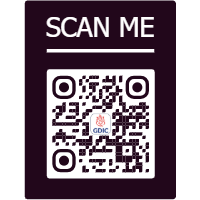
An in-depth description of the structures and anomalies inside the chest region, which includes the lungs, heart, mediastinum, thoracic spine, and surrounding tissues, can be found in a CT chest 3D report.
An in-depth description of the structures and anomalies inside the chest region, which includes the lungs, heart, mediastinum, thoracic spine, and surrounding tissues, can be found in a CT chest 3D report. The following are some of the major discoveries that could be listed in a CT chest 3D report:
Evaluation of the lungs
The report will evaluate the lungs' appearance and health, including the existence of any tumors, nodules, or lesions. Additionally, it can reveal details regarding lung size, anomalies of the airways, lung inflammation, and the presence of fluid or infection.
Vascular anomalies
The scan can display in-depth pictures of the chest's blood vessels, including the main arteries and veins. It can spot vascular anomalies such as pulmonary embolisms (blood clots in the lungs), aneurysms (bulging blood vessel walls), and other diseases.
Abnormalities of the mediastinum
The heart, major blood arteries, lymph nodes, and other organs are located in the mediastinum, which is the center of the chest. CT scans can detect anomalies such as cysts, tumors, or enlarged lymph nodes in this region.
Bony anomalies and abnormalities of the chest wall
CT chest scans can give clear pictures of the sternum, ribs, and other chest bones. They can assist in locating fractures, tumors, infections, or other problems affecting the bones and chest wall.
Pleural abnormalities
The pleura, a thin membrane that lines the lungs and chest wall, might exhibit abnormalities when scanned with a CT scan. It can identify ailments such as pleural effusion (fluid buildup), pneumothorax (lung collapse), and pleural thickening.
Chest Infections
Infections of the chest, such as pneumonia, bronchitis, or abscesses, can be detected using a CT chest scan. They can assist in determining the scope and location of the infection.
Nodules in the lungs
CT scans are very useful for finding tiny nodules or lesions in the lungs. Further analysis may be required to ascertain the nature of these nodules because they could be benign or potentially cancerous.
Thoracic trauma
CT scans are frequently used to evaluate injuries including rib fractures, lung contusions, or pneumothorax in cases of chest trauma. To support optimal treatment, they offer comprehensive information.
Tumor and Metastasis
CT chest scans can identify both primary lung tumors and metastases or the spread of cancer from other parts of the body. They support staging and treatment planning by determining the extent, size, and placement of tumors.
It's crucial to keep in mind that the particular results in a CT chest 3D report will vary depending on the mri scans clinical issue being ct scans answered and the Ultrasound specifics of the patient. The results should be interpreted by a qualified healthcare expert in light of the patient's overall health and medical background.
How can Ganesh diagnostics help?
Ganesh Diagnostics can leverage CT 3D chest scans to aid in early disease detection and accurate diagnosis of chest conditions. By providing detailed and three-dimensional imaging of the chest, including lungs, heart, and blood vessels, CT scans enable radiologists and physicians to identify and evaluate diseases such as lung cancer, pulmonary embolism, and pneumonia.
These scans help facilitate timely intervention, improved treatment planning, and better patient outcomes. Therefore, Stay One Step Ahead and utilize CT 3D Chest Scans at Ganesh Diagnostic to unveil hidden threats.













